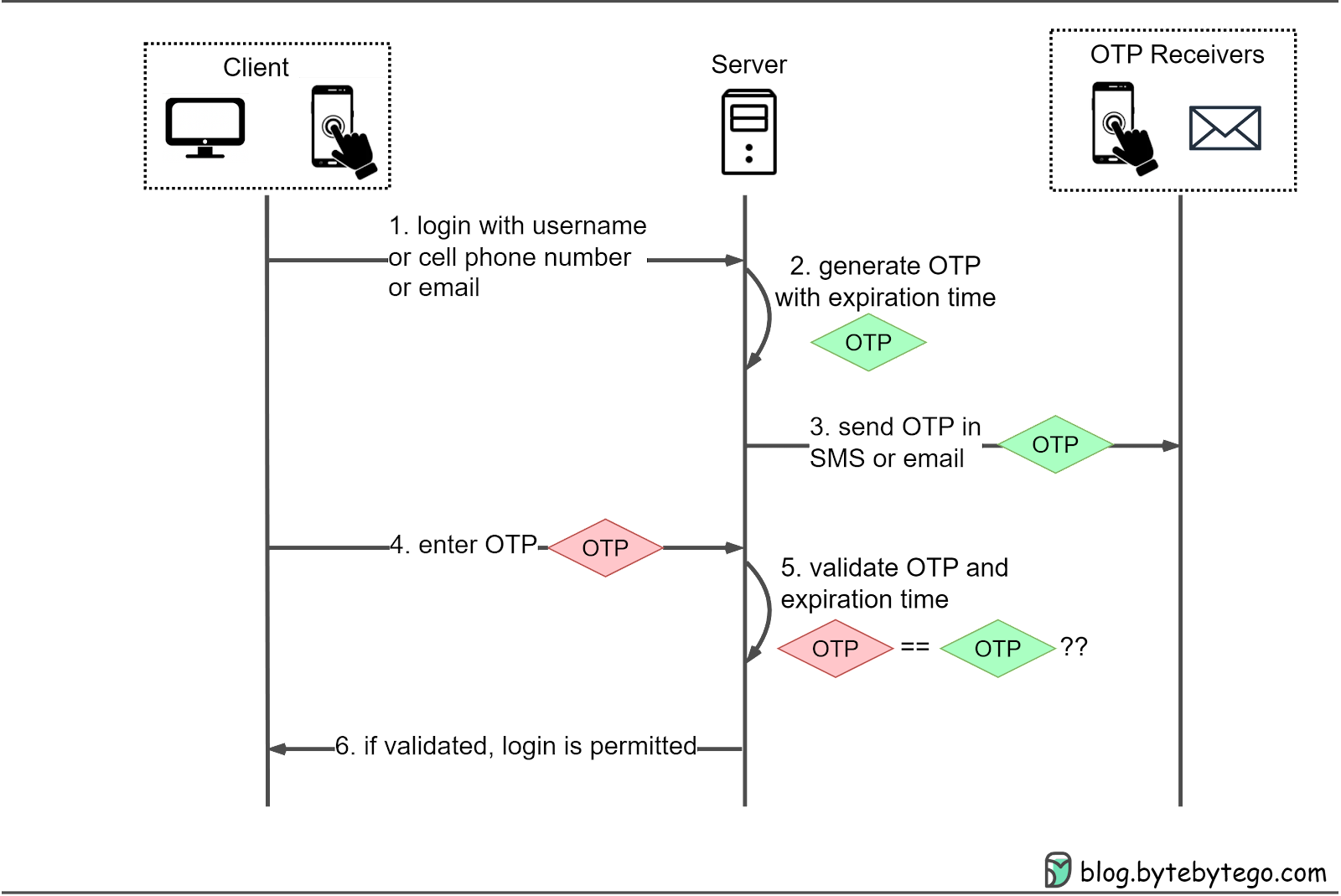-
Notifications
You must be signed in to change notification settings - Fork 0
New issue
Have a question about this project? Sign up for a free GitHub account to open an issue and contact its maintainers and the community.
By clicking “Sign up for GitHub”, you agree to our terms of service and privacy statement. We’ll occasionally send you account related emails.
Already on GitHub? Sign in to your account
[ByteByteGo Daily] Password, Session, Cookie, Token, JWT, SSO, OAuth - Authentication Explained - Part 2 #144
Comments
Passwordless AuthenticationOne Time password( OTP)
How OTPs work in detailAlternatively, a hardware or software key can be used to generate OTPs for multi-factor authentication (MFA), for example, like Google 2FA. |
SSO (Single Sign-On)(Hold to wait more experience to add context) Single Sign-On (SSO) is a user authentication method that allows us to access multiple systems or applications with a single set of credentials. SSO streamlines the login process, providing a seamless user experience across various platforms. The SSO process mainly relies on a Central Authentication Service (CAS) server. Here's a step-by-step breakdown of the SSO process: |

Overview
This is a note extracted from Password, Session, Cookie, Token, JWT, SSO, OAuth - Authentication Explained - Part 2, By Alex Xu, it introduces three ways of passwordless authentications:
While the article claims it has introduced JWT token-based authentication in part 1, it actually hasn't done so yet. Therefore, in this note, I will cover the topic of JWT authentication with my understanding.
Passwordless Authentication
When it comes to authentication, there are three factors to consider
Password fall under "something you know", One-Time Password(OTP) prove that the user owns a cell phone a device, while biometric authentication "something unique to you"
The text was updated successfully, but these errors were encountered: